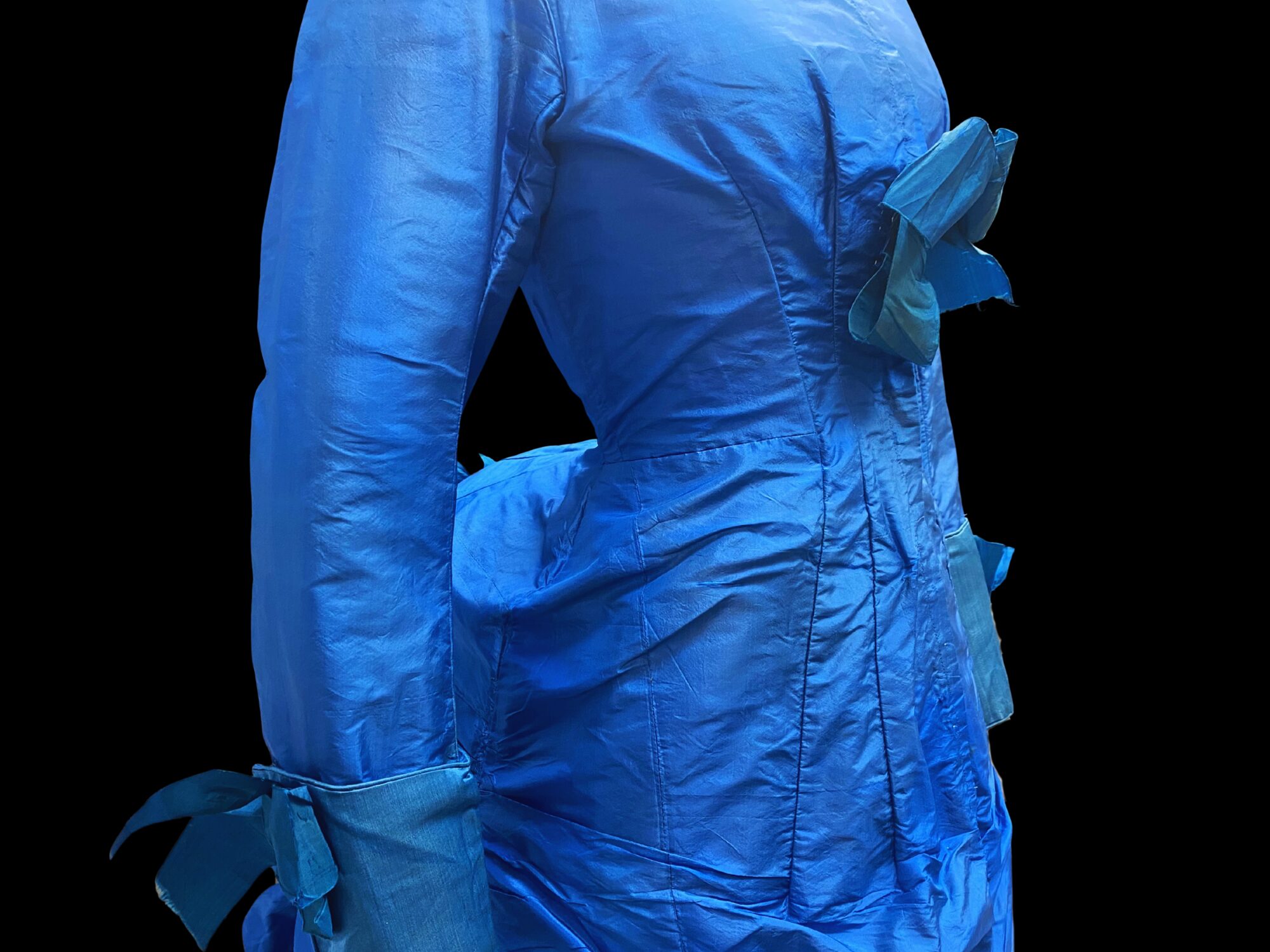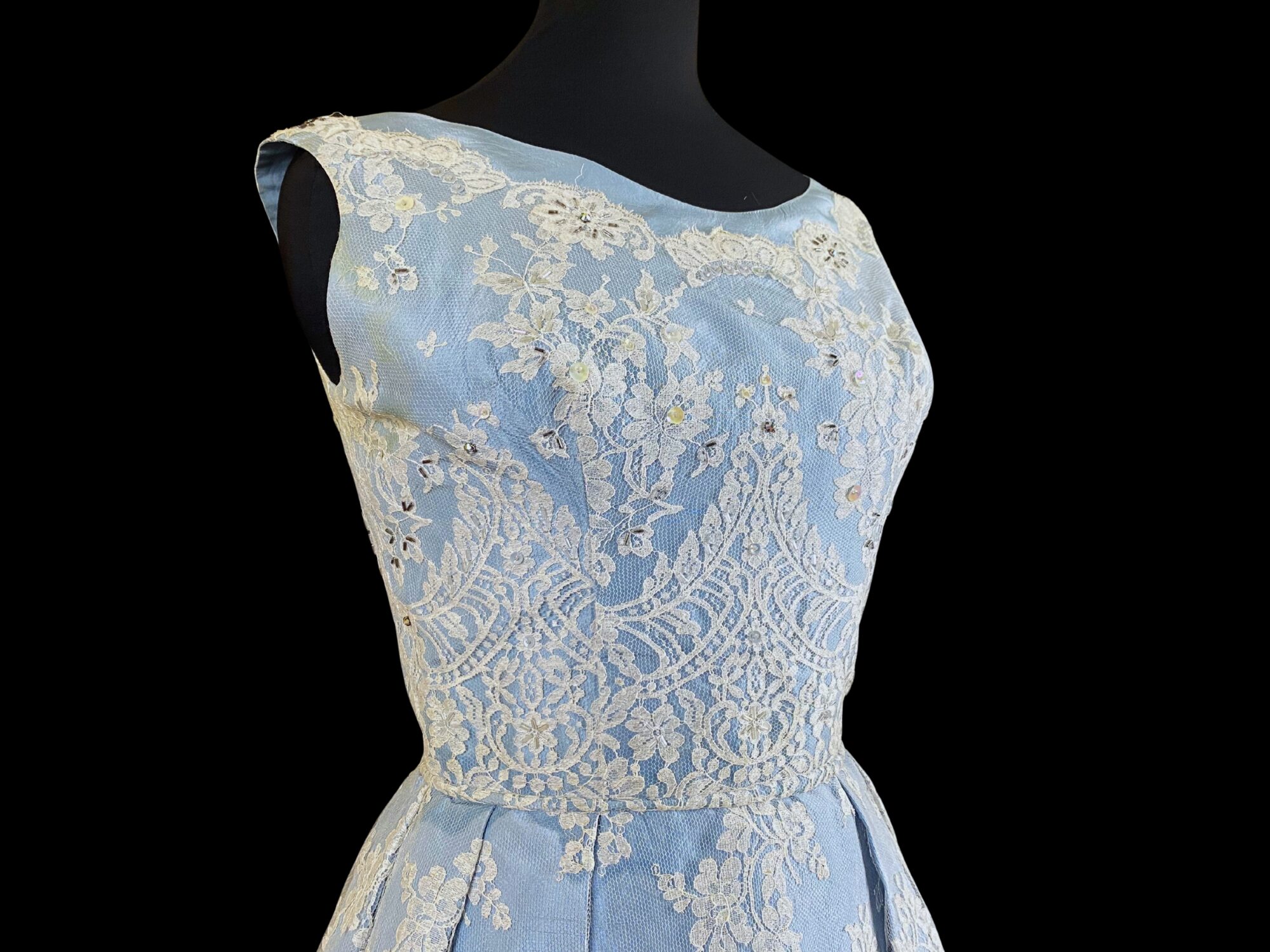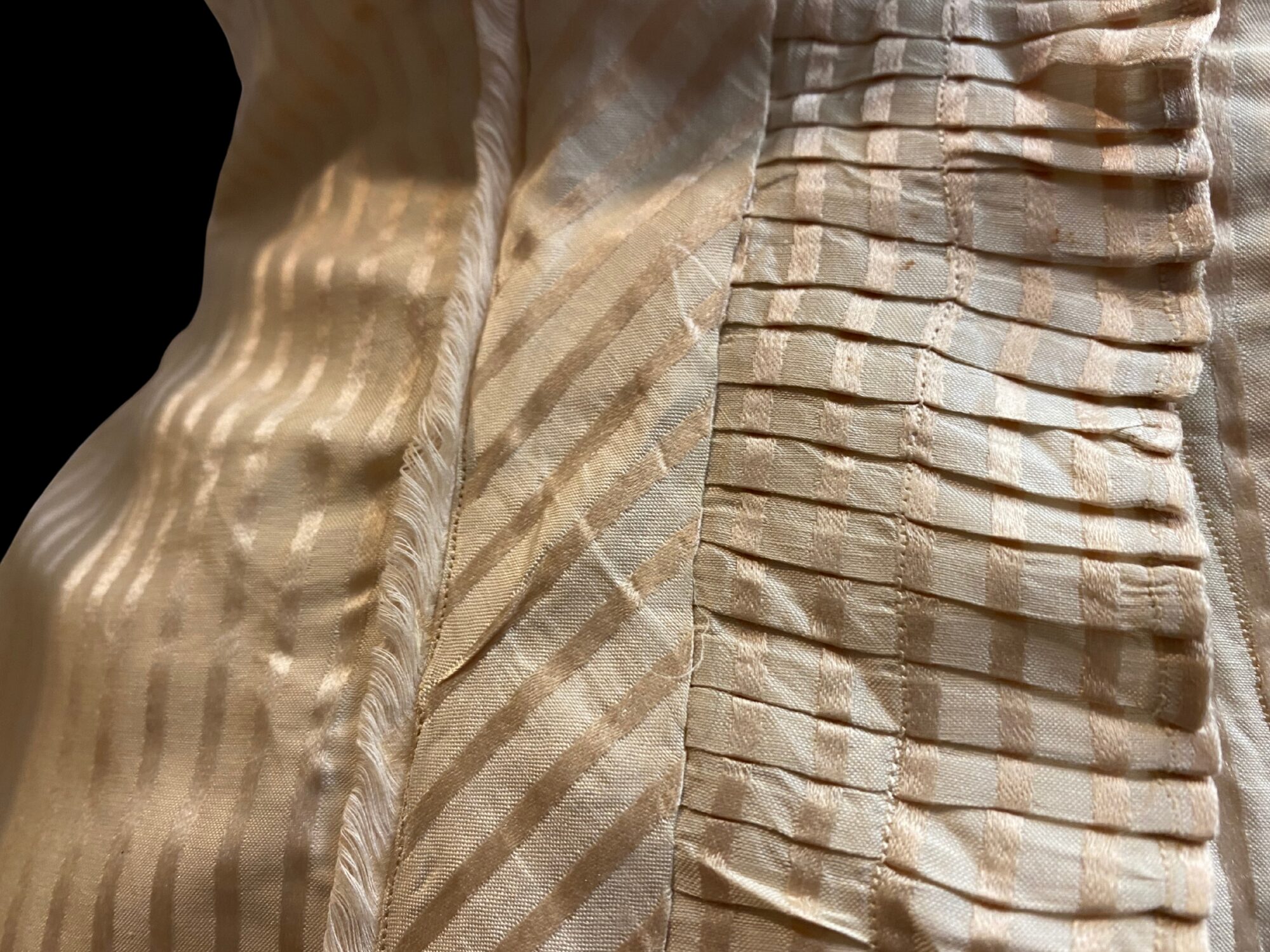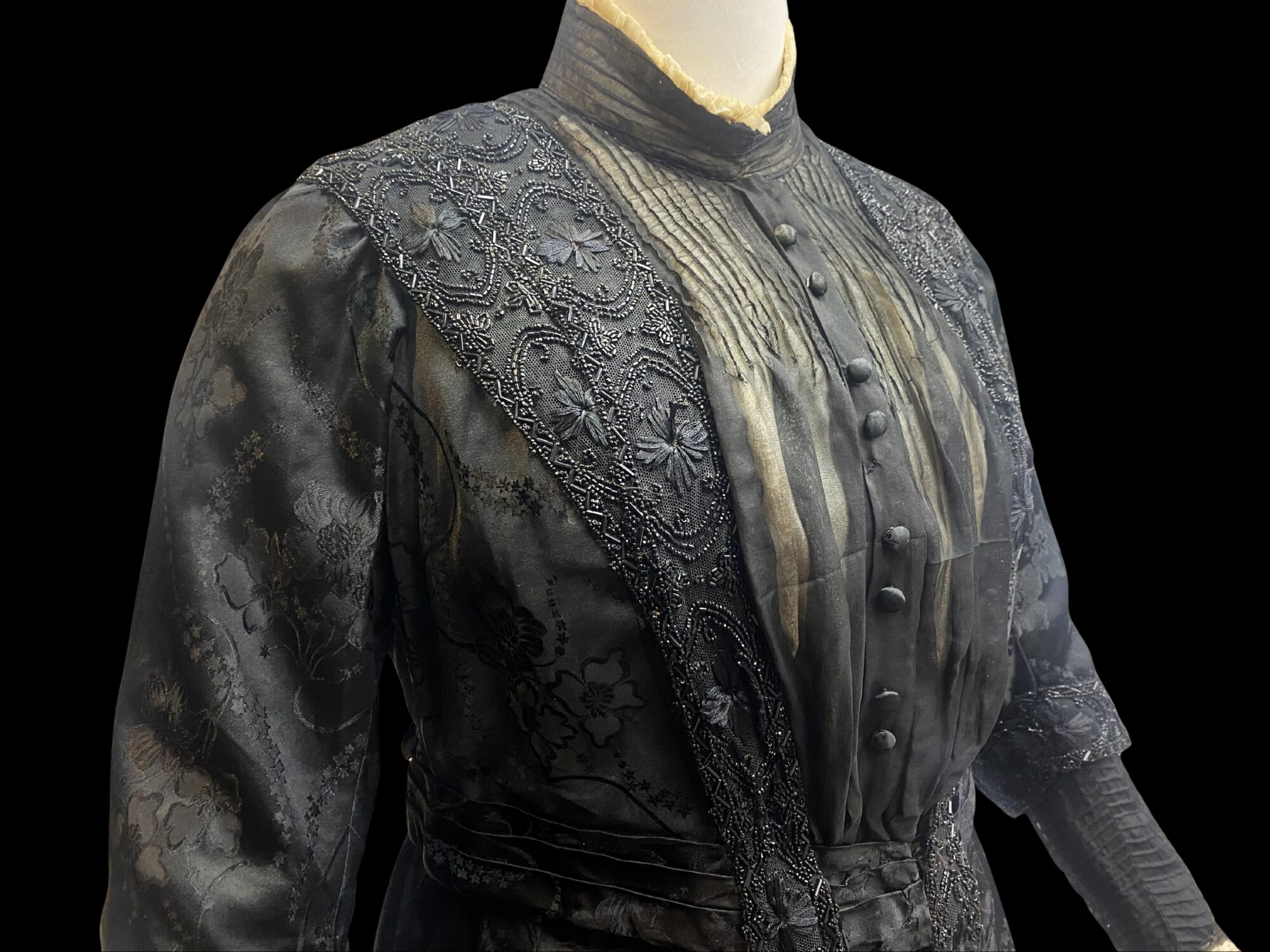Collection Stories
This printed muslin dress embodies the fashion trends of the 1830s – between the reign of King William IV and the start of the Victorian era. It was a time where extremely large gigot (leg of mutton) sleeves on gowns were giving way to tight-sleeved, form-fitting bodices. This dress also has a short, detachable cape.
This silhouette helped women look demure whilst at the same time physically restricting their movement. Low necklines with sloping shoulders emphasised the fashionable champaign bottle shaped neck while tight upper sleeves restricted any upward arm movements. Large skirts emphasised a tiny waistline, which were made smaller through the distortions of a corset. At least six petticoats were needed to give the desired skirt volume, but that mass of fabric often wrapped around the legs and made any fast forward motion difficult.
One of the petticoats worn, known by the French word crin, was padded with horsehair to give even greater volume. The crin was the forerunner of the crinoline, a wire hooped skirt invented in 1856 to reduce the weight and number of petticoats required while still maintaining skirt volume. The English Woman’s Domestic Magazine of 1867 reported that 3,000 women were burned to death annually and another 20,000 injured because they wore the crinoline.
The dress is made from a self-striped cotton muslin. Muslin was first made in the city of Mosul (now in Iraq), from which it derived its name. It was first imported into Europe from India in the 17th century and became a leading trade product of the East India Company. Indian muslins were much desired – they were handwoven and extremely fine.
British textile manufacturers started manufacturing cotton products including muslin but could not compete against the Indian products. Manufacturers petitioned the British government to implemented protectionist policies such as bans and tariffs to restrict Indian imports. At the same time, they invested, with funds from the profits made by the East India Company, in new manufacturing technologies which lead to the Industrial Revolution. The Indian textile trade took a beating while Britain became the world’s leading cotton manufacturer of the 19th century.
Printing on textiles advanced at this time, from manual hand blocked to machine rolled. This dress shows both methods. It has been printed with three colours, using a mix of rolling and hand blocking. The pattern features floral bouquets in two shades of red and black. The difference in colour shade, shown on the flowers, was made by the depth of the engraving on the rollers so they were able to hold more or less ink. The green of the leaves has been hand blocked after the rolling. This is identifiable because it is not consistently in the same place.
The dress is completely hand-sewn as sewing machines did not become commercially available until the 1860s. It is secured by hook and eye at the back and has decorative pleats across the bust as well as piping around the edges. The style of this dress is known as a walking dress, but interestingly, it also features an opening at the front to below breast level, indicating that a nursing mother wore it. We do not know the name of that mother, but it was a treasured item for her daughter Louisa Knight, born in Cornwell 1846, she married George Brewer Philp, a draper and clothier, in September 1878 in New Zealand. Louisa died in 1923 and is buried in Whanganui. In 1977 their granddaughter, Aileen Greeves, donated the dress to the Museum, allowing us all to enjoy its qualities.
By Trish Nugent-Lyne, Kaihāpai Taonga/Collections & Curatorial Lead at Whanganui Regional Museum
Image: Muslin walking dress donated by Aileen Greeves, dating from the 1830s.
Photographed by Kathy Greensides
WRM 1977.3.1
View the full-length image.






